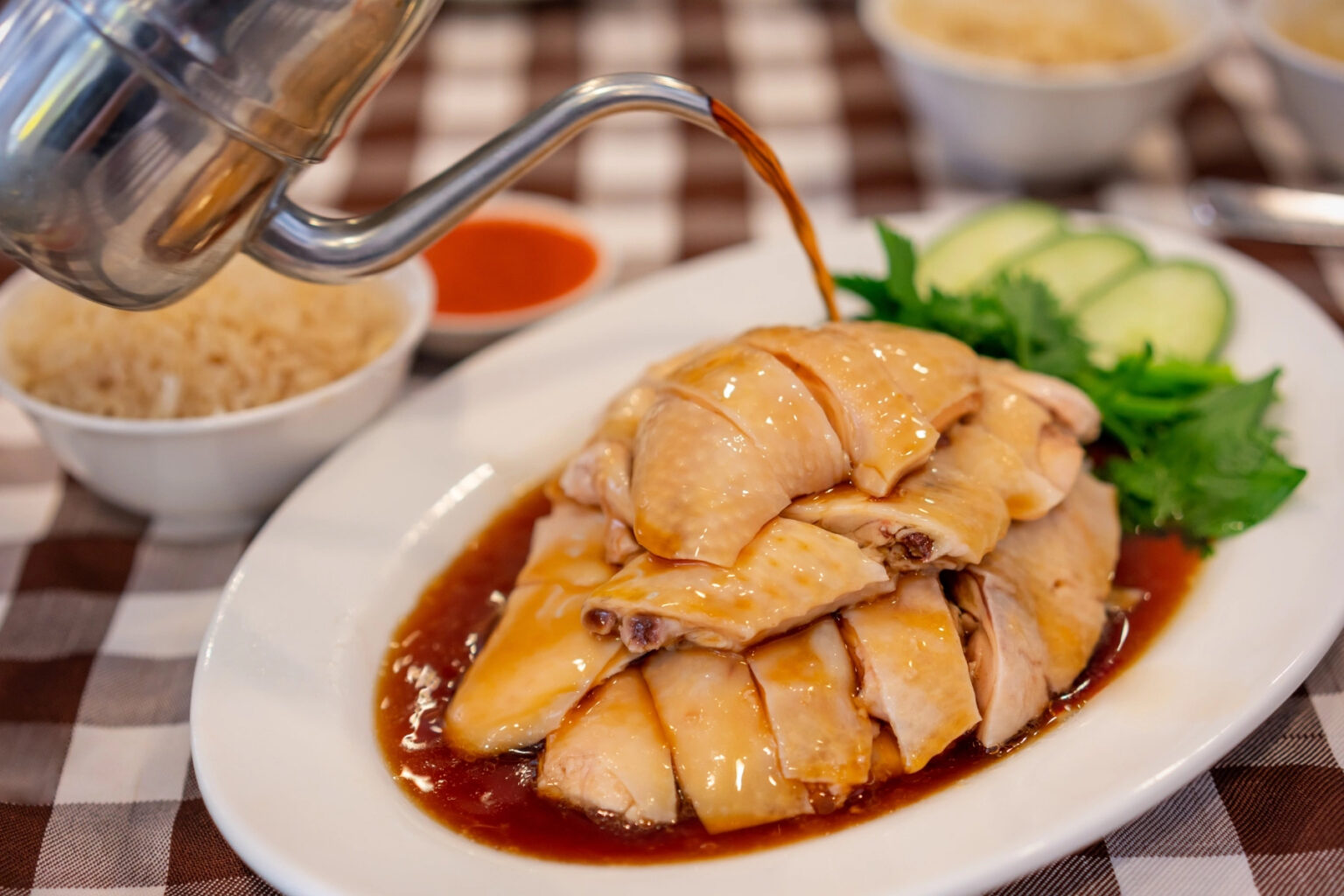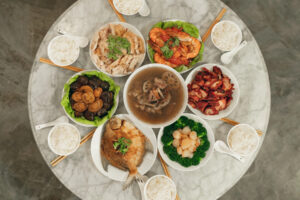Singapore’s history comprises a rich culture of influences, most notably from Malaysia, India, China, and the Global North. This melting pot might be most evident in the country’s politics and languages, but it also comes through in its local food. Just look at the dazzling array of dishes available at Singapore’s hawker centers (local food markets) or kopitiams (local diners).
Dive into Singapore’s culinary heritage with these tasty traditional foods:
Hainanese chicken rice
If Singapore had an official national dish, then this one may just be it. Originating in Hainan, a tropical island off China’s southern coast, the iconic Hainanese chicken rice features succulent slices over fragrant jasmine rice stewed in chicken stock.
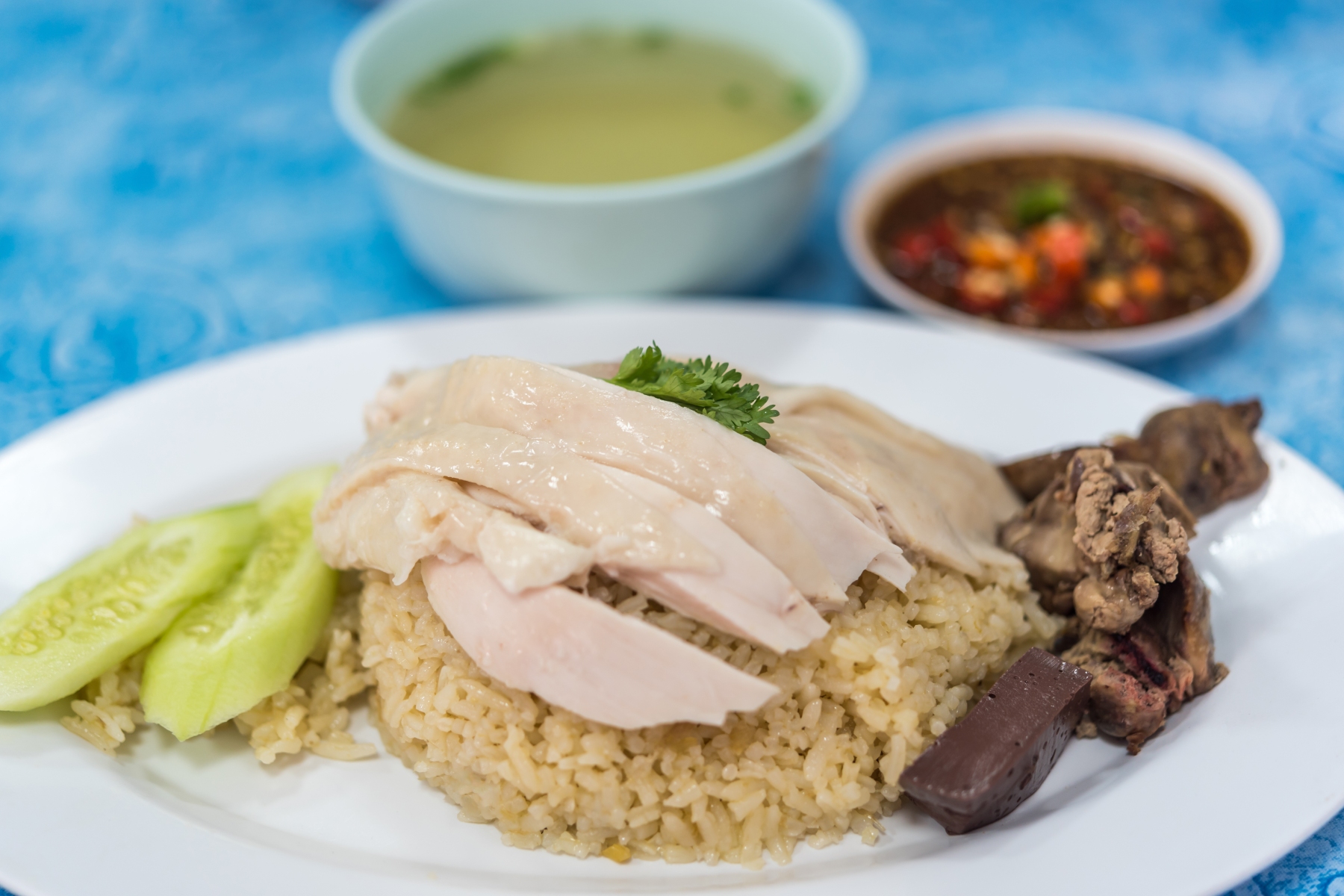
There are two options served in the dish: original steamed or decadent roasted chicken. Both are served with chicken stock soup, cucumber slices, and a trio of dips: chili sauce, a ginger-and-garlic blend, and a thick, sweet soy sauce.
Head to Tian Tian for an Anthony Bourdain-approved, Michelin-starred version.
Make your own
- Keep this authentic recipe handy
- Whip up this Aussie celebrity chef’s easy-to-follow video recipe
- This in-depth recipe is great for beginners
Chili crab
Another contender for the title of Singapore’s national dish, chili crab, is an event in and of itself.
It was supposedly invented by local hawker Cher Yam Tian in the mid-1950s when she substituted the recipe’s traditional tomato sauce for a premade chili. The creation quickly caught on and eventually gave rise to a fully-fledged restaurant called Palm Beach.
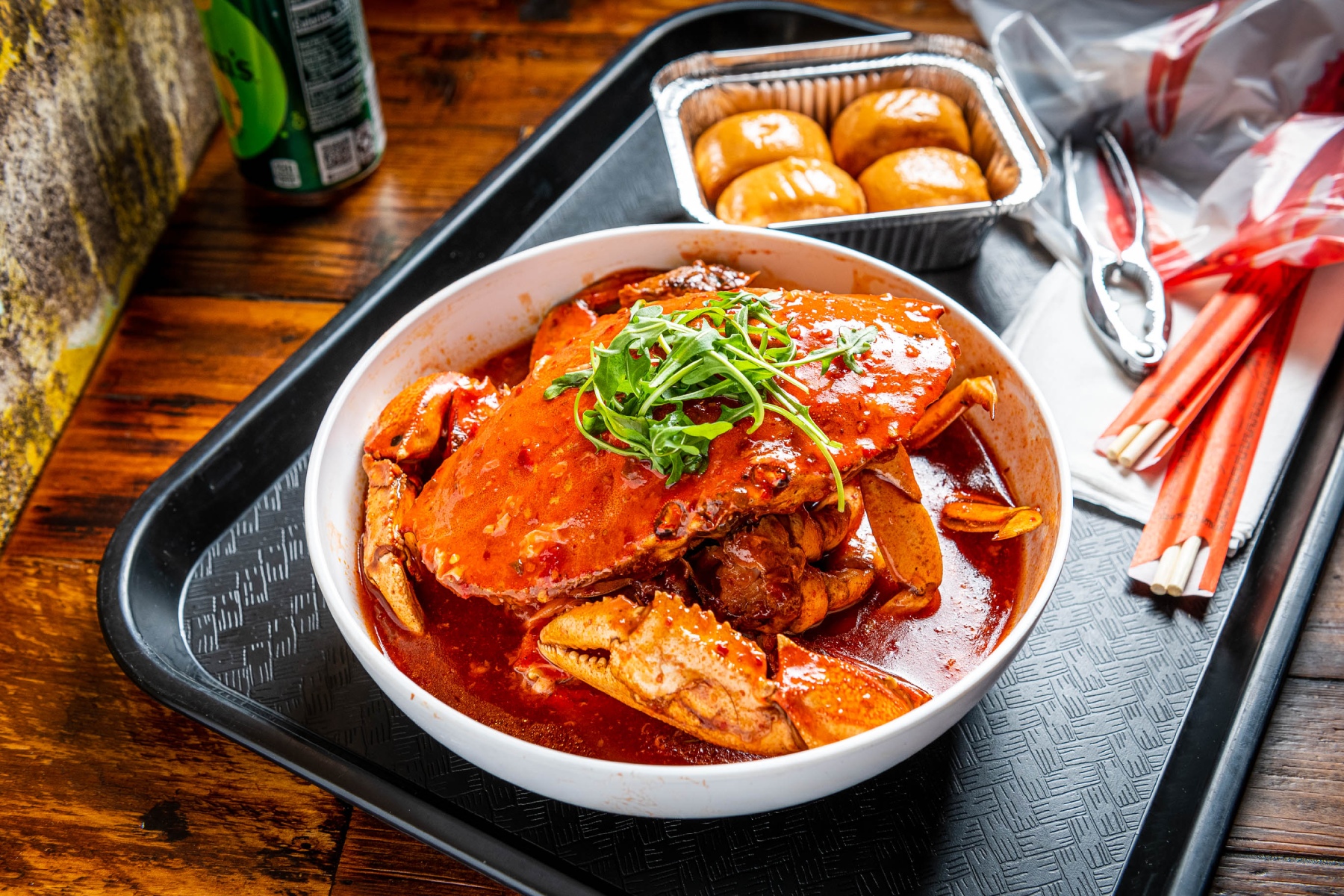
However, another famous local chef, Hooi Kok Wah, pioneered the now-classic version of the dish. In the 1960s, he created a more sour version that balanced spice with acidity thanks to including lemon juice, vinegar, tomato paste, and egg whites.

Writer and local expert
Gayatri Bhaumik
Insider tip
The best versions of this dish always use mud crabs for the best flavor.
Traditionally, chefs will steam the crabs and then stir-fry them in a tomato-chili gravy. It packs a punch of spice and flavor, but the side of fried buns (mantou) will take the edge off.
Make your own
- Try this authentic video recipe by Singapore’s iconic Peranakan chef
- This step-by-step guide will have you whipping up crabs with ease
Laksa
A spicy, fragrant ode to Singapore’s cultural heritage, laksa is a wildly popular noodle soup dish. While the origins of this beloved food remain unclear, many believe it is the creation of the Peranakans, the unique Straits Chinese people who have both Chinese and Malay heritage. This is due to laksa’s rice noodles and Malay-style spice paste.
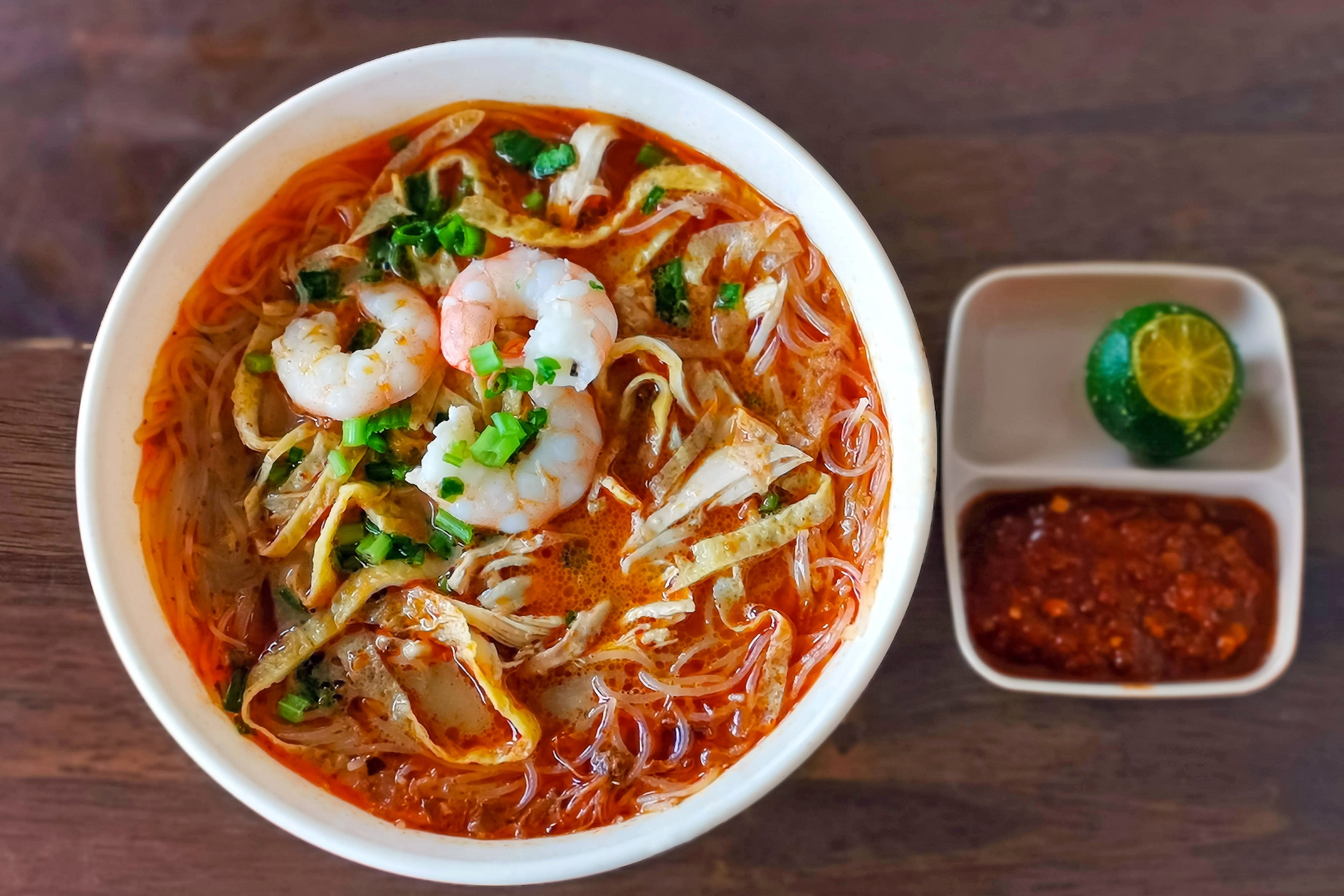
Each chef will add their unique twist to the recipe. You can, however, expect any decent laksa to include rice noodles, herbs, coconut milk, prawns, sliced chicken, fish cakes, tofu, and chili paste (sambal belachan).
Be sure to try the famous Katong and Siglap versions, too, specific to two Singaporean neighborhoods. Additionally, laksa is popular at any time of day, be it for a light breakfast or a hearty dinner.
Make your own
- Sample this Singapore-approved recipe
- Whip up this foolproof video version
- Go all out with this decadent video recipe
Char kway teow
A delightfully flavorful noodle dish, char kway teow (meaning stir-fried rice cake strips) is a sought-after street food in Singapore with a touch of Teochew culture. The affordable, high-fat ingredients that go into this recipe are a legacy of its roots among the laborers of China’s Guangdong province.
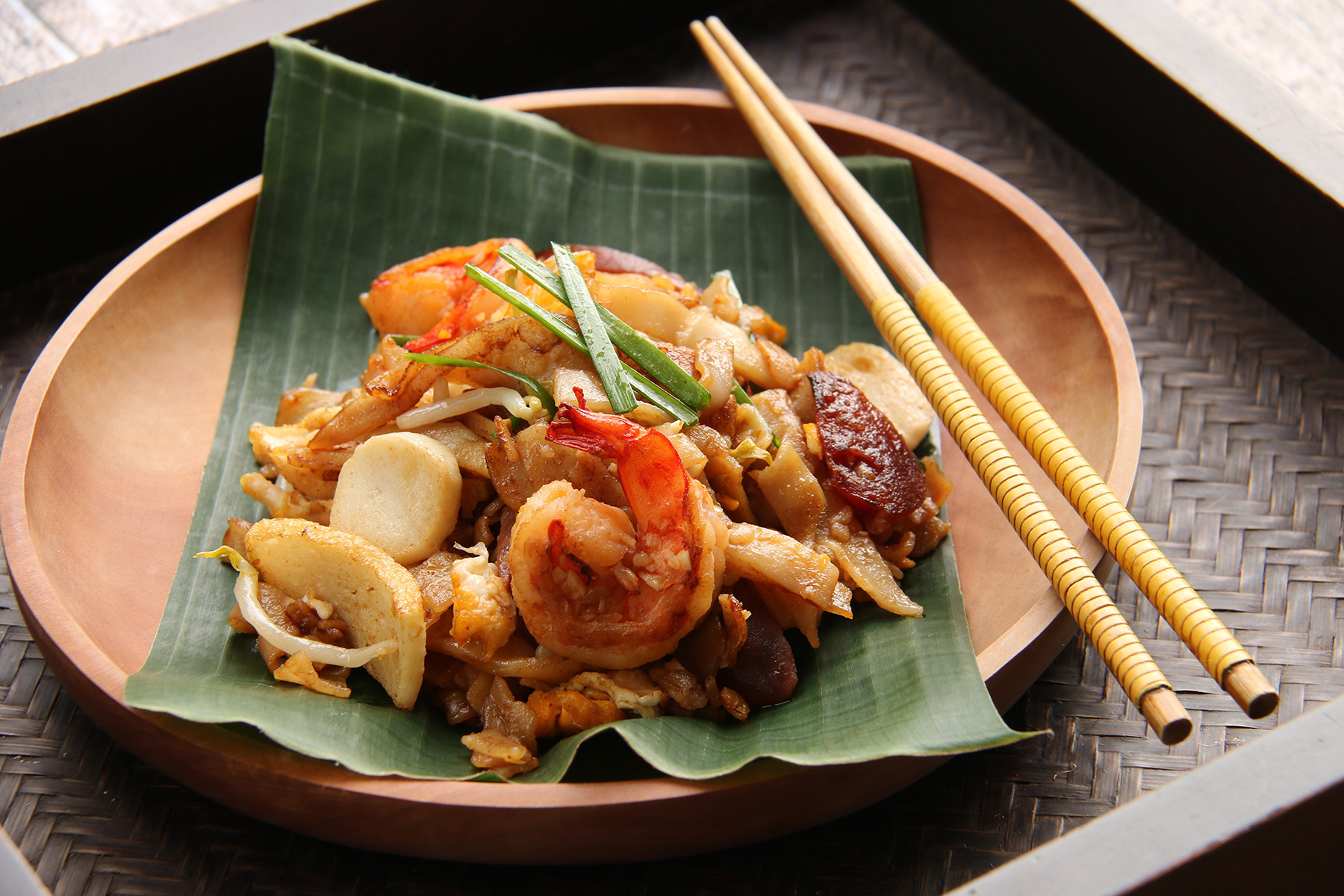
This wildly popular Singapore dish features flat white and yellow wheat noodles, soy sauce, Chinese sausage (lap cheong), egg, fishcakes, prawns, and beansprouts. The ingredients are stir-fried in lard in a wok and then topped with sambal (a sour-spicy chili sauce) to create a smoky, delicious dish.
Make your own
- Get cooking with this video tutorial
- Try this quick and easy four-step recipe
- Indulge mindfully with this healthier version
Fish head curry
This traditional food pays tribute to Indian cuisine in Singapore, though its Chinese influences mean you will not find it anywhere in Delhi or Madras. Fish head curry was the invention of Indian immigrant M.J. Gomez, who set out to capture the tastebuds of his Singaporean-Chinese customers at his food stall in the late 1940s.

The unique local dish involves stewing a fish head (usually a red snapper) with vegetables to create a light curry that packs a flavorful punch. The inclusion of tamarind also gives the curry its iconic sweet-sour taste. Pair with rice and a glass of Calamansi lime juice for the best effect.
Make your own
- Put your kitchen skills to the test with this detailed recipe
- Get cooking with this video recipe
- Master the dish with this easy-to-follow guide
Bak kut teh
Born in the Chinese province of Fuijian and brought to Singaporean shores in the 19th century by Hokkien immigrants, bak kut teh is a full-on experience. Originally, it was a popular breakfast food for the Chinese laborers working on the docks in Singapore.
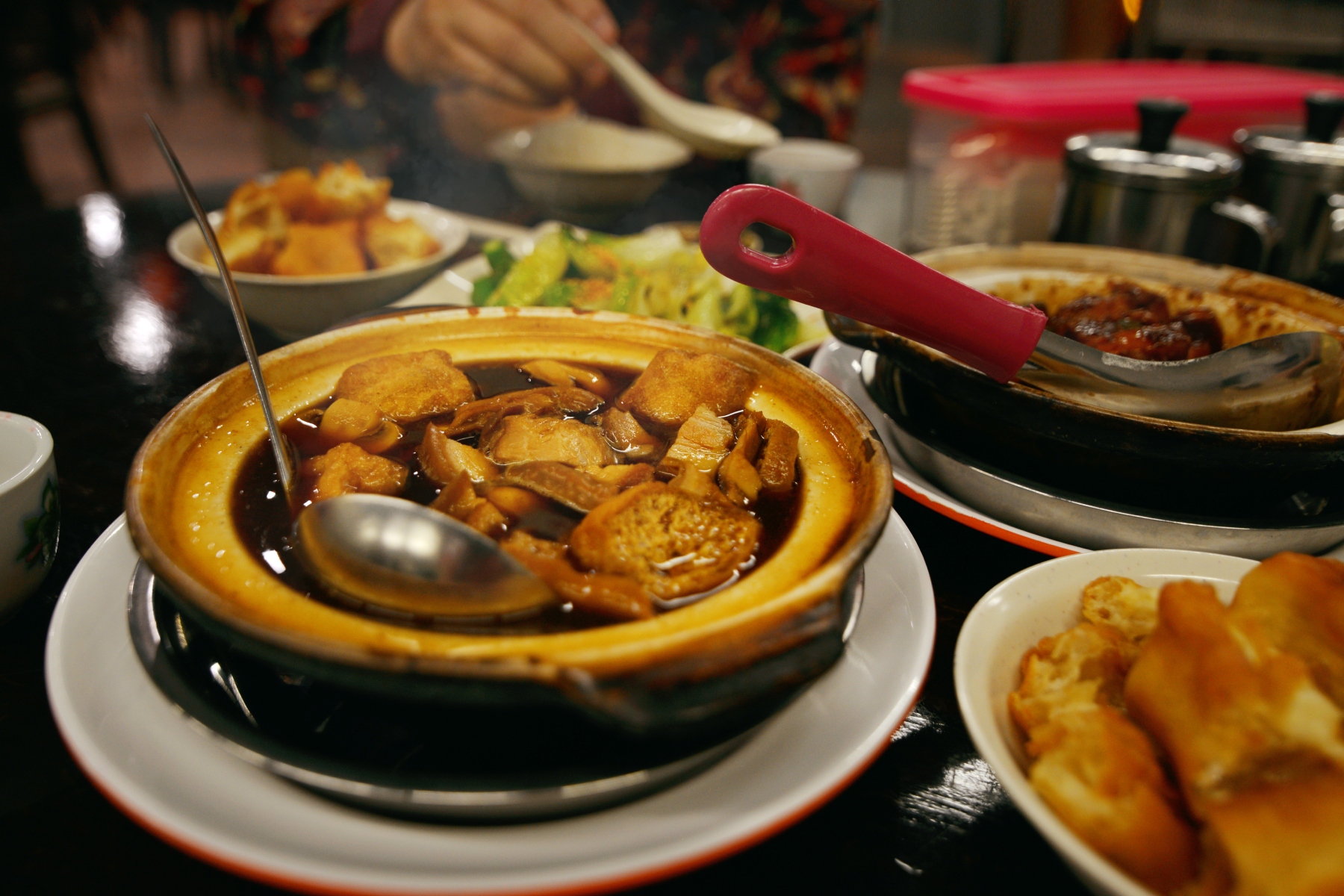
The heart of the dish is a broth made from simmering pork ribs in a wealth of herbs and spices. Traditionally, diners pair the broth with soy sauce, chili, and fried dough strips (tiao) or rice to create an aromatic, textural meal.

Writer and local expert
Gayatri Bhaumik
Insider tip
There are numerous varieties of bak kut teh drawing on Hokkien, Teochew, and Cantonese traditions, so make sure to sample a few to find your favorite!
Make your own
- Whip up this version from a beloved Singaporean restaurant
- Keep it simple with this visual guide
- Get the perfect dish with this detailed recipe
Kaya toast
A cornerstone of Singaporean cuisine, kaya toast is a perfect blend of salty and sweet, and carbs and protein. The dish has its roots in early 20th century Singapore when several Hainanese coffee shops, specifically Ya Kun and Kheng Hoe Heng, began serving this decadent sandwich.

Kaya is a sweet, thick condiment made with pandan leaf, coconut milk, eggs, and sugar. Local diners will serve it in a sandwich, spread across two pieces of white bread with a thick slab of butter in between.
For the full experience, enjoy it with traditional soft-boiled eggs, pepper, and soy sauce. Lastly, wash it down with a warm cup of coffee (kopi) or tea (teh).
Make your own
- Whip up this classic recipe
- Try this celebrity chef version
- Follow this detailed guide for the authentic experience
Nasi lemak
A popular breakfast food in Singapore that can also be eaten throughout the day, nasi lemak is a decadent rice dish with roots in Malay cuisine. Traditionally, it is a simple street food featuring aromatic rice, anchovies, chili sauce, and cucumber. These days, though, this Singaporean food is a little fancier.
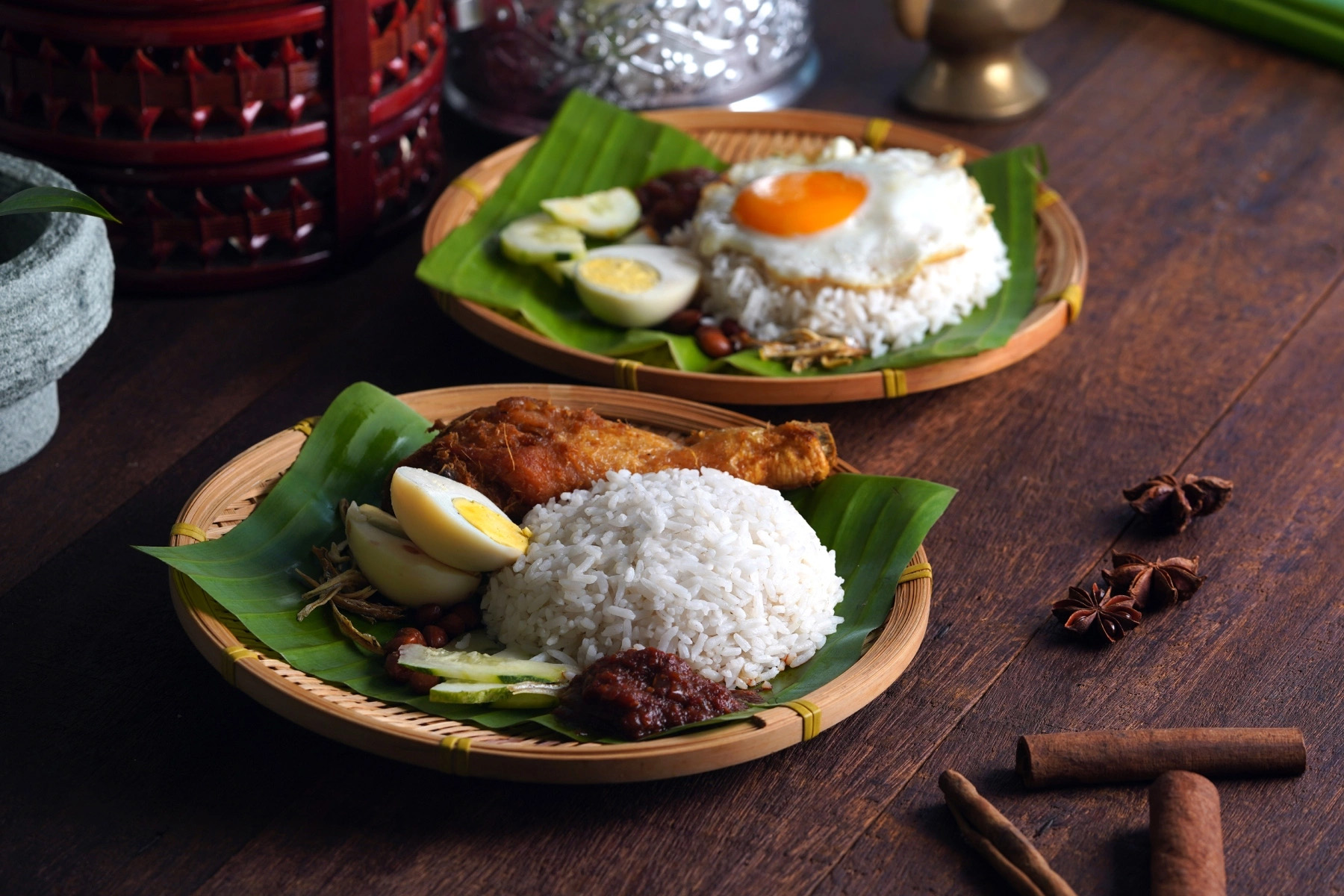
Nasi lemak (the Malay term for fatty rice) features a beautifully fragrant rice infused with coconut milk and pandan leaves. Most vendors put their own spin on accompaniments but expect to see additions like fried chicken, fish, and otah (a soft, piquant fish cake grilled in banana leaves).

Writer and local expert
Gayatri Bhaumik
Insider tip
Be sure to serve the rice with spicy chili jam and crispy fried anchovies mixed with peanuts.
Make your own
- Sample authentic flavors with this traditional recipe
- Try this modern classic
- Start from scratch with this detailed tutorial
Roti prata
The perfect dish for kicking off your day – or ending a fun night out, as part of the city’s late-night dinner culture – this Singaporean food has its roots in India. Roti prata is a fried, round flatbread that is crispy on the outside but doughy on the inside. Diners typically pair it with a rich, flavorful fish, chicken, or mutton curry.
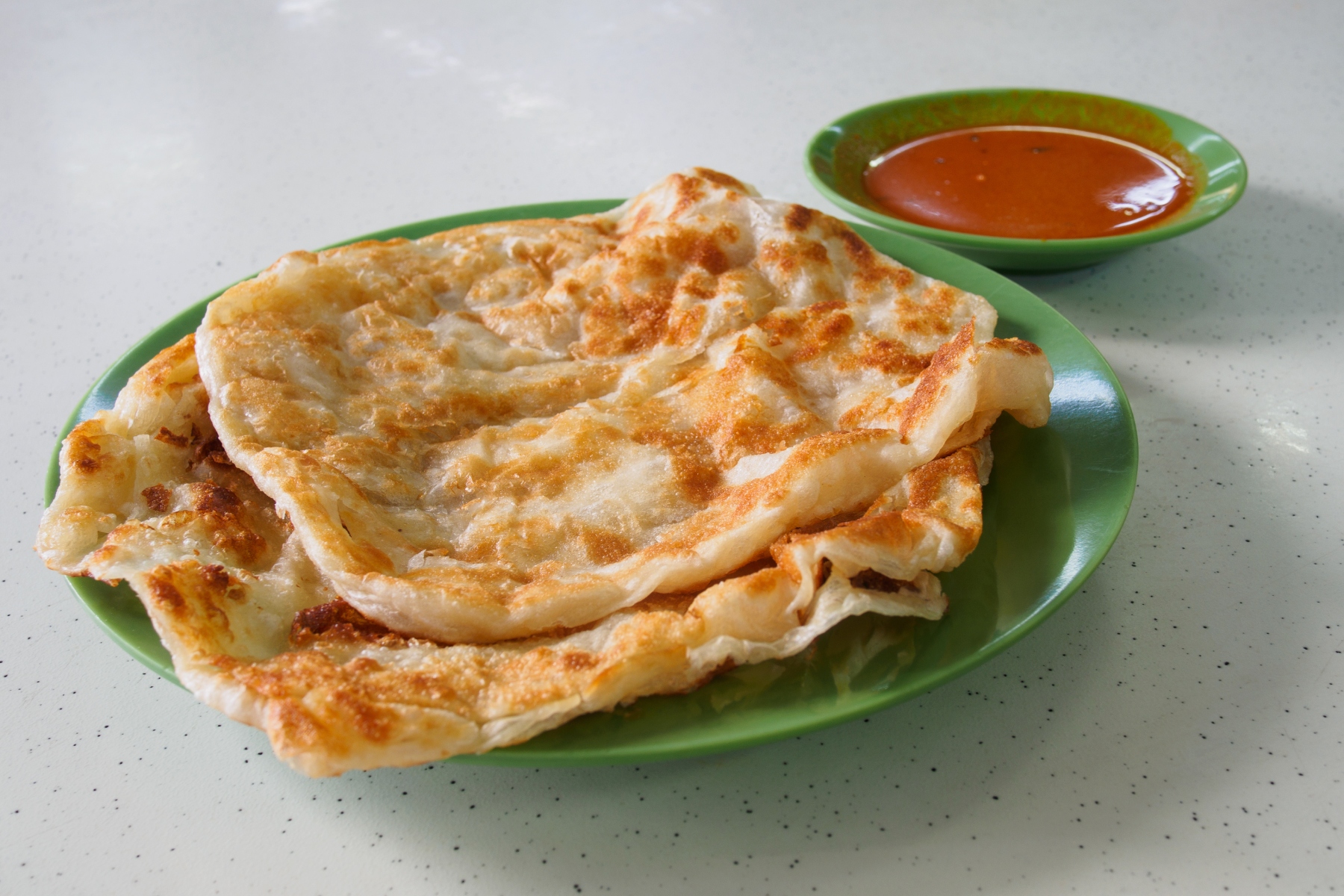
Many eateries get creative with their Roti prata offerings, so you can also order your flatbread plain (kosong) or with egg and pair it with white sugar, cheese, banana, or Nutella.
Make your own
- Try this video tutorial
- Sample this Malaysian twist
- Whip up this easy-to-follow recipe
Chai tow kway
In English, this dish is known as “carrot cake.” Don’t be fooled, however: this Singaporean food bears no resemblance whatsoever to the sweet, frosting-topped dessert.
A simple yet hearty meal, chai tow kway is a variation of chao gao guo (fried starch cake), a recipe originating from China’s Chaoshan province. It was brought to Singapore by Teochew immigrants and later popularized in the 1960s by two hawkers called Ng Soik Theng and Lau Goh.

In the Lion City, chai tow kway is a delightfully salty and savory dish made by stir-frying soft squares of white radish with eggs and spring onions. Two varieties are available: the white is milder and crispier, while the black includes a sweet black sauce to enhance the flavor profile.
Think of this as the ultimate Singapore comfort food.
Make your own
- Keep this straightforward recipe handy
- Delight friends with this palate-pleasing version
- Keep it simple with this video recipe
